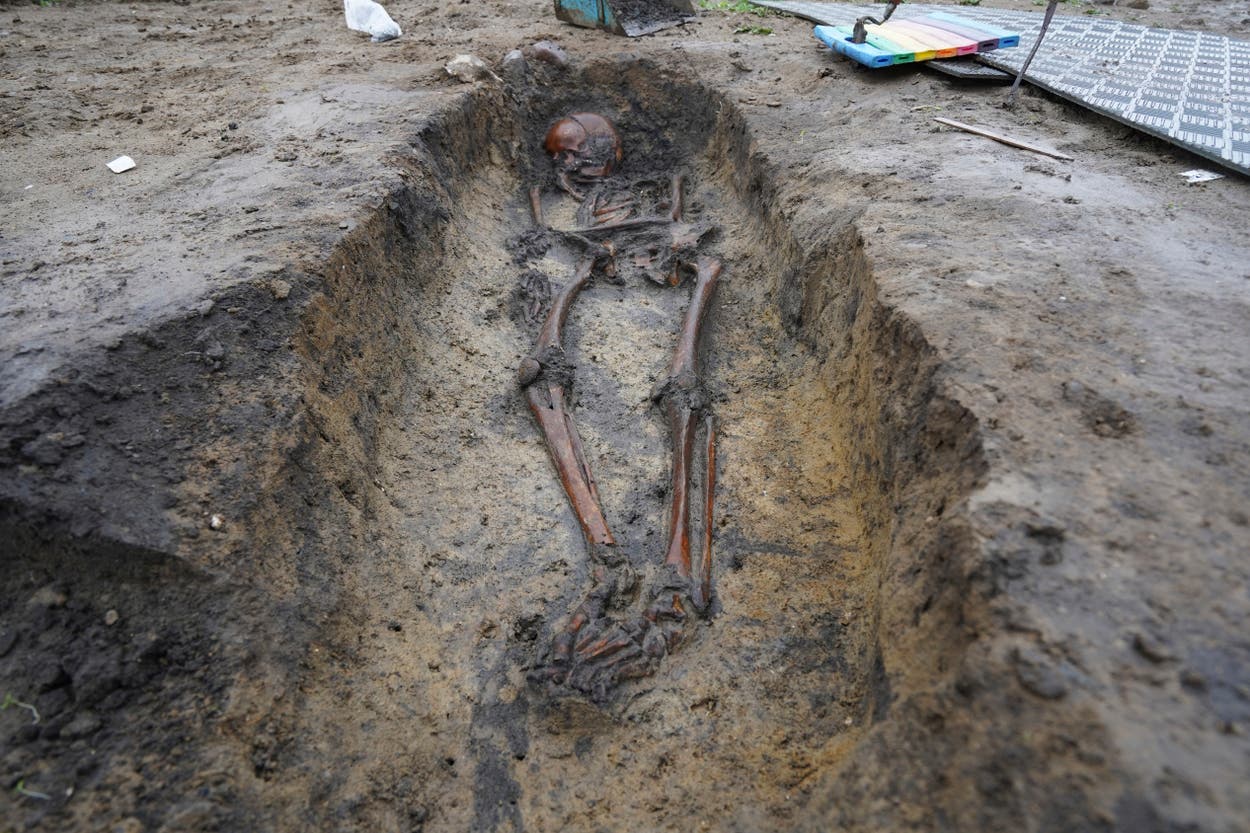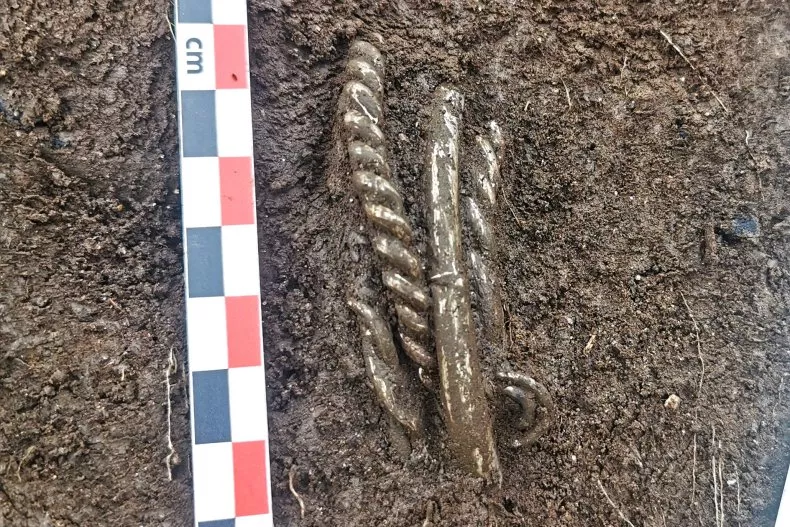Skeletons and skulls sit in graves at an excavation site of a 10th century Viking burial ground in Aasum, Denmark (Copyright 2024 The Associated Press. All rights reserved)
The discovery of 50 “exceptionally well-preserved” skeletons in a village in central Denmark could hold important clues to the Viking era.
Archaeologists made the landmark discovery that included a burial ground and the skeletons.
Experts hope to conduct DNA analyses and possibly reconstruct detailed life histories, as well as looking into social patterns in Viking Age, such as kinship, migration patterns and more.
“This is such an exciting find because we found these skeletons that are so very, very well preserved,” said archeologist Michael Borre Lundø, who led the six-month dig. “Normally, we would be lucky to find a few teeth in the graves, but here we have entire skeletons.”
Read the rest of this article...







